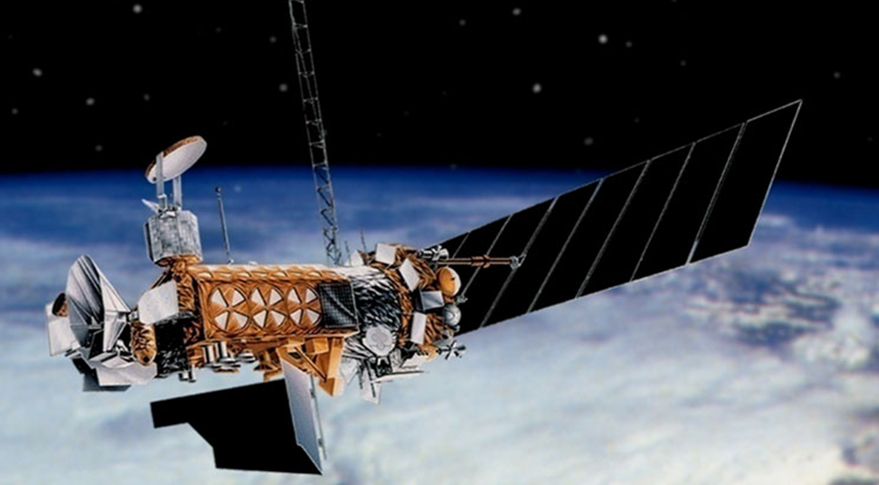USAF Weather Woes Grow as DMSP-19 Satellite Stops Obeying Orders

WASHINGTON — NOAA satellite operators unexpectedly lost the ability to command one of the Air Force's primary weather satellites on Feb. 11 and now officials from both organizations are racing to determine if the spacecraft can return to service, officials told SpaceNews.
The satellite, known as the Defense Meteorological Satellite Program Flight 19, is used to help weather forecasters predict fog, thunderstorms and hurricanes that could impact military operations. Launched in April 2014, the spacecraft is the Air Force's newest weather satellite on orbit.
Air Force officials do not yet know the cause of the problem, or if the satellite can be recovered, Andy Roake, a spokesman for Air Force Space Command, said in a March 2 email. [See launch photos for the DMSP-19 weather satellite]
"Operators lost the ability to command and control Defense Meteorological Satellite Program Flight 19 (DMSP F-19) Feb. 11, 2016 and subsequently are making attempts to regain connectivity," he said. "The satellite is in a stable configuration while operators continue to troubleshoot the anomaly.
"At this time, it is not known what caused the anomaly or if the satellite will be recovered, and the anomaly is under investigation. There are no other known issues with the satellite."
Air Force Space Command disclosed the problem with the satellite March 2 in response to questions from SpaceNews.
The DMSP constellation requires at least two primary satellites and two backup satellites to gather cloud imagery. As a result of the problem, the Air Force has reassigned an older satellite, DMSP Flight 17, which launched in 2006 and had been serving as a backup, into a primary role, Roake said.
Get the Space.com Newsletter
Breaking space news, the latest updates on rocket launches, skywatching events and more!
"There is no impact to the strategic weather mission, and the DMSP constellation remains able to support warfighter requirements," Roake said. "The constellation continues to provide weather and atmospheric data to users as it has for the past five decades."
DMSP operators in Suitland, Maryland, working for the National Oceanic and Atmospheric Administration, first recognized trouble with the satellite when they could not "establish command access" with the satellite on Feb. 11, NOAA officials said in a Feb. 12 email obtained by SpaceNews.
Workers initially attributed the problem to the ground system, but then discovered a problem with the "RF receive subsystem" when its temperature spiked 10 degrees. Without that subsystem "the ability to uplink real time commands and refresh operational and navigation loads is lost," the email said.
About four hours later the Air Force declared a state of spacecraft emergency and on the next four contacts with the satellite, "all attempts to restore command access failed," the email said.
Roake said March 2 that operators are working through a 30-day plan to recover the command and control capability and that it is "premature to consider end of life shutdown actions at this time."
"The satellite is still sending signals; DMSP engineers continue to receive telemetry from F-19 and are able to verify the health and status of the vehicle," he said.
But, he added, any data from the satellite is no longer being used for weather forecasting. In addition, Air Force officials expect a gradual decay in that data in the 60 days following a problem.
The Air Force still has five DMSP satellites, Flights 14 – 18, operating in primary or backup roles. The oldest satellite, Flight 14, launched in 1997.
Even the potential loss of DMSP Flight 19 is likely to renew questions about the health of the Air Force's weather satellite program.
In February 2015, DMSP Flight 13, exploded on orbit fter a problem with its battery. In addition, after much debate, Congress opted last year not to launch the next satellite in the DMSP program Flight 20, and instead chose to terminate the DMSP program. That decision meant the Air Force is not expected to launch another weather satellite until 2017 at the earliest and that satellite, a technical demonstration from the Operationally Responsive Space Office, would not provide the same kinds of weather data as the DMSP satellites.
Lockheed Martin Space Systems of Denver is the prime contractor on the DMSP program. Matt Kramer, a Lockheed Martin spokesman, referred questions to the Air Force.
Originally published on SpaceNews.
Join our Space Forums to keep talking space on the latest missions, night sky and more! And if you have a news tip, correction or comment, let us know at: community@space.com.
Mike Gruss is a veteran defense reporter and Editor-in-Chief of Sightline Media Group, which includes Army Times, Air Force Times, Dense News, Military Times and Navy Times. From 2013 to 2016, Mike served as a Senior Staff Writer for SpaceNews covering national security space programs and military space policy in the U.S. Congress. Mike earned a bachelor's degree in English and American Studies from Miami University and has previously wrote for the Journal Gazette in Fort Wayne, Indiana and the Virginian-Pilot in Virginia before joining SpaceNews. Prior to joining Sightline in 2017, he was a senior editor of FedTech magazine covering technology in federal government. You can see Mike's latest project on Twitter.









